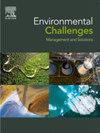野火面积和PM2.5水平对泰国精神障碍患病率的影响
Q2 Environmental Science
引用次数: 0
摘要
野火与健康结果之间的关系通常是基于重大野火事件进行研究的。然而,对慢性野火活动的研究,特别是通过PM2.5介导的影响的研究仍然有限。本研究旨在调查野火面积和卫星获取的PM2.5水平多年来与泰国精神障碍患病率之间的关系。2015年至2023年的数据来自二手来源,每年在省级汇总。采用具有稳健标准误差的泊松回归模型,按省份聚类来估计患病率(PR)。为了通过PM2.5估算野火的间接影响,对显示出显著关联的疾病进行了中介分析。结果显示,野火暴露与痴呆(PR= 1.010)、酒精依赖(PR= 1.007)、兴奋剂依赖(PR= 1.009)、其他物质依赖(PR= 1.008)、双相情感障碍(PR= 1.008)、抑郁症(PR= 1.012)、焦虑症(PR= 1.008)、其他精神障碍(PR= 1.009)和自杀企图(PR= 1.009)的患病率有显著相关性,P <均与野火暴露相关;0.05. 尽管野火暴露与PM2.5之间存在显著相关性,但中介分析显示,野火对精神障碍的直接影响,而不是通过PM2.5途径。综上所述,野火可能在精神障碍的发生中起重要作用。应优先加强野火监测和减灾工作,以潜在地减少精神障碍的患病率,而不是仅仅依靠空气污染水平进行公共卫生干预。本文章由计算机程序翻译,如有差异,请以英文原文为准。
Association between Wildfire area and PM2.5 levels on the Prevalence of Mental disorders in Thailand
Association between wildfire and health outcomes has usually been studied based on major wildfire events. However, studies on chronic wildfire activity, especially studies of the effects that mediate through particulate matter 2.5 (PM2.5), remain limited. This study aims to investigate the association between wildfire area and satellite-derived PM2.5 levels over years with the prevalence of mental disorders across Thailand. Data were obtained from secondary sources for the years 2015 to 2023, aggregated at the provincial level annually. Poisson regression models with robust standard errors, clustered by province, were employed to estimate prevalence ratios (PR). To estimate indirect effects of wildfire through PM2.5, mediation analyses were conducted for disorders that showed significant associations. The findings showed significant associations of wildfire exposure and prevalence of dementia (PR = 1.010), alcohol dependence (PR= 1.007), stimulant dependence (PR= 1.009), other substance dependence (PR= 1.008), bipolar disorder (PR= 1.008), depressive disorders (PR= 1.012), anxiety disorders (PR= 1.008), other mental disorders (PR= 1.009), and suicide attempts (PR = 1.009), with all P < 0.05. Despite the significant correlation between wildfire exposure and PM2.5, mediation analysis revealed that wildfires exert direct effects on mental disorders, rather than through the PM2.5 pathway. In conclusion, wildfire may play an important role in the occurrence of mental disorders. Enhanced wildfire monitoring and mitigation efforts should be prioritized to potentially reduce the prevalence of mental disorders, rather than relying solely on air pollution levels for public health interventions.
求助全文
通过发布文献求助,成功后即可免费获取论文全文。
去求助
来源期刊

Environmental Challenges
Environmental Science-Environmental Engineering
CiteScore
8.00
自引率
0.00%
发文量
249
审稿时长
8 weeks
 求助内容:
求助内容: 应助结果提醒方式:
应助结果提醒方式:


